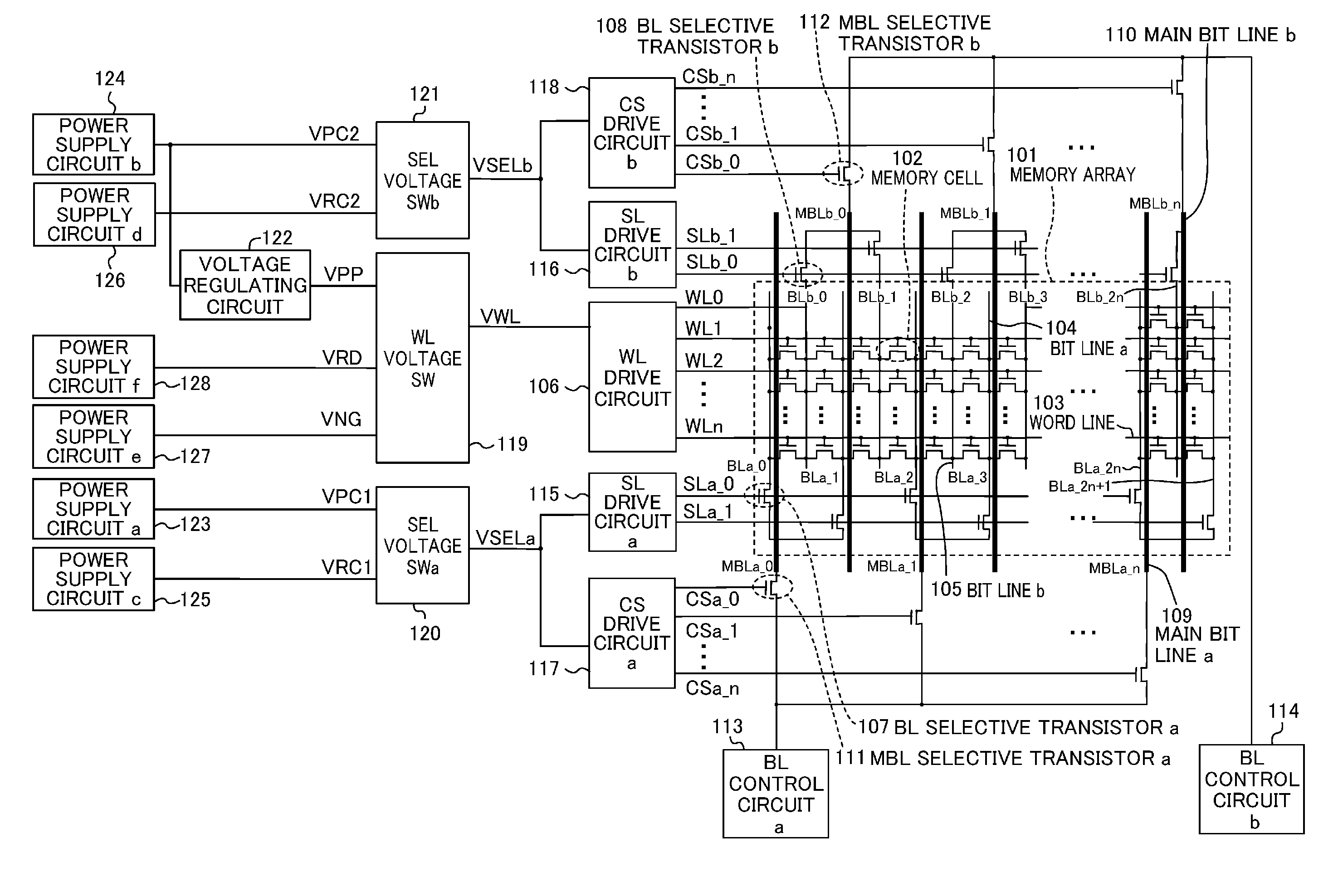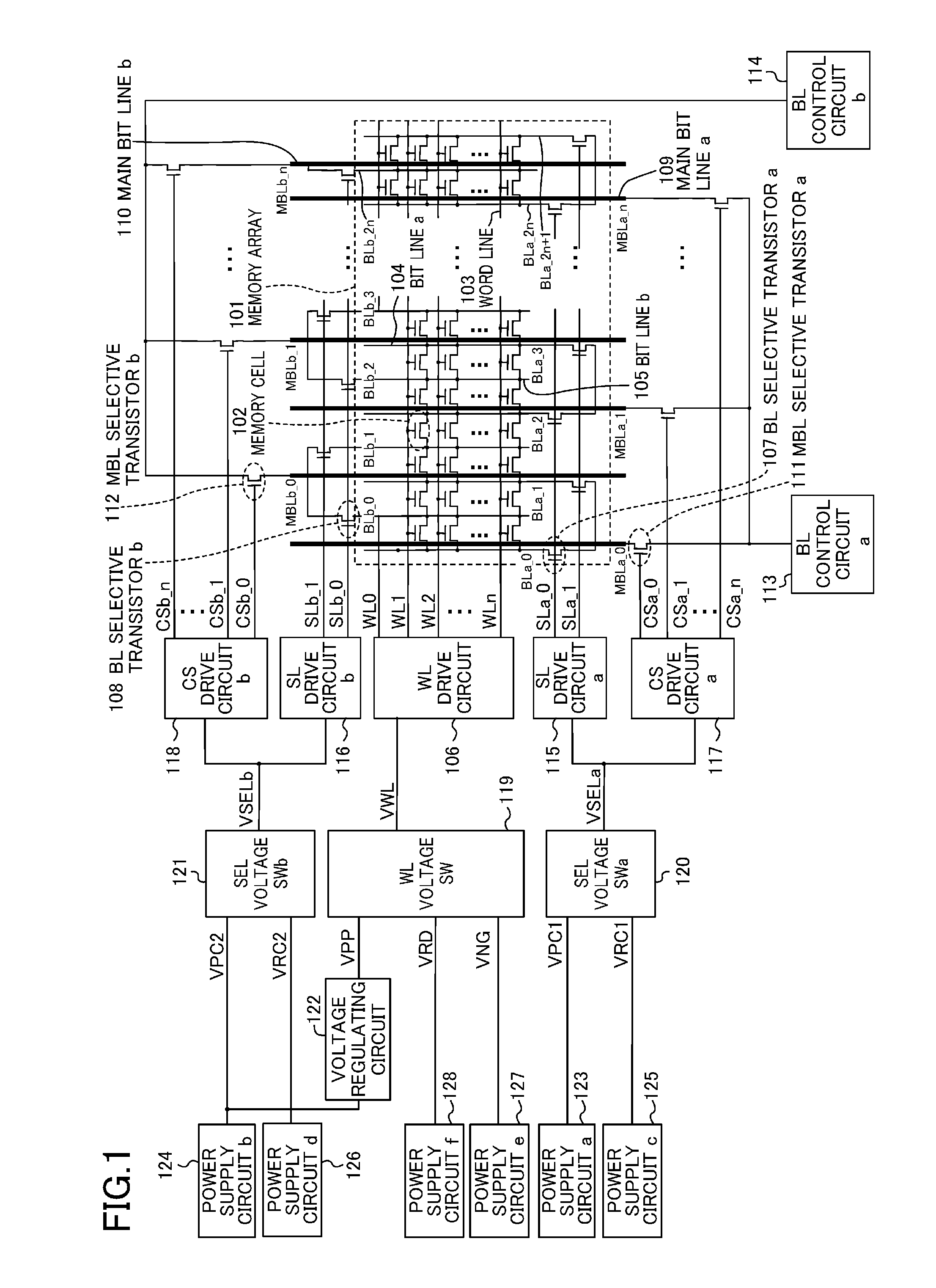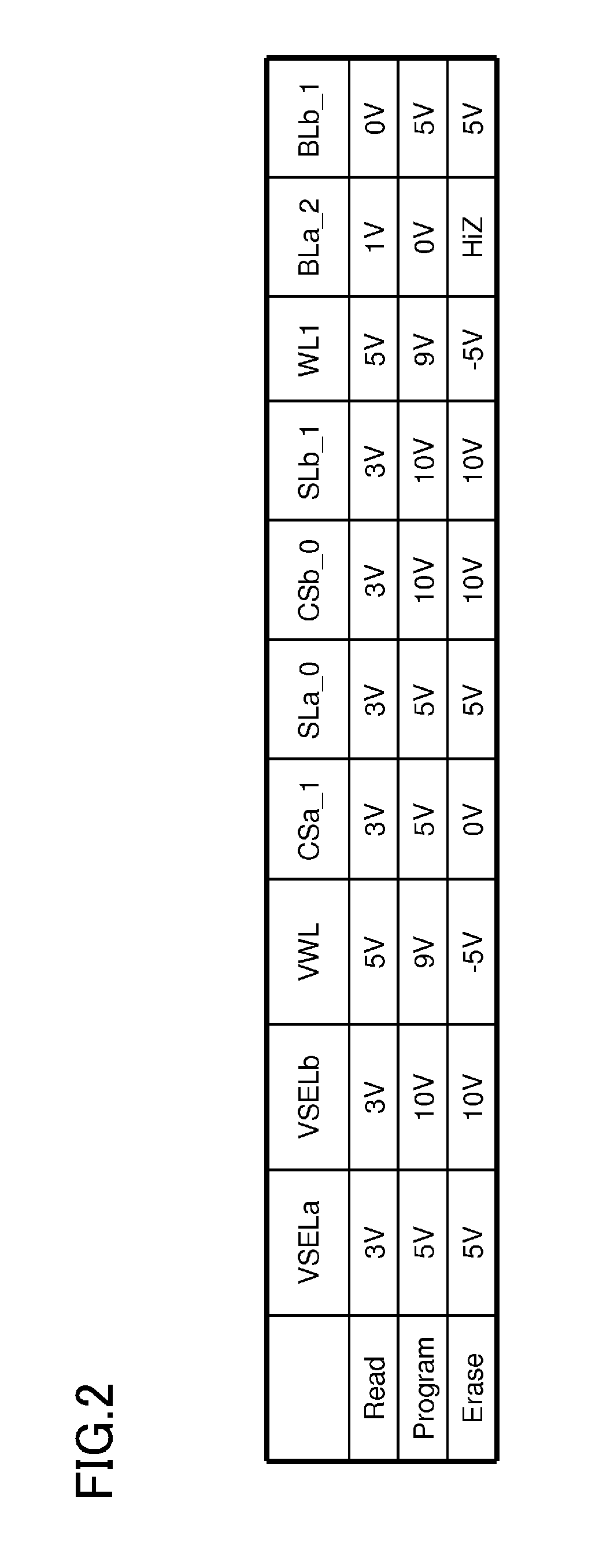Nonvolatile semiconductor memory device
a semiconductor memory and non-volatile technology, applied in the field of non-volatile semiconductor memory devices, can solve the problems of high probability of occurrence of erroneous reads and high deterioration amount, and achieve the effect of reducing the voltage tolerance, reducing the circuit area, and reducing the drive circuit for bit line selective transistors
- Summary
- Abstract
- Description
- Claims
- Application Information
AI Technical Summary
Benefits of technology
Problems solved by technology
Method used
Image
Examples
first embodiment
[0022]FIG. 1 is a view showing a configuration of a nonvolatile semiconductor memory device of the first embodiment. In FIG. 1, a memory array 101 includes: a plurality of nonvolatile memory cells 102 arranged in the X and Y directions into an array; a plurality of word lines 103 (WL0 to WLn) extending in the X direction in the region of arrangement of the memory cells 102; and a plurality of bit lines a 104 (BLa_0 to BLa_2n+1) as the first bit lines and a plurality of bit lines b 105 (BLb_0 to BLb_2n) as the second bit lines extending in the Y direction in the region of arrangement of the memory cells 102. The memory cells 102, the word lines 103, the bit lines a 104, and the bit lines b 105 are arranged using a virtual ground.
[0023]It is herein assumed that the memory cells 102 are metal oxide nitride oxide silicon (MONOS) memory cells that store information by local injection of charge. To each of the memory cells 102, connected are the word line 103 for control of the gate, the ...
second embodiment
[0050]FIG. 3 is a view showing a configuration of a nonvolatile semiconductor memory device of the second embodiment. In FIG. 3, components common to those in FIG. 1 are denoted by the same reference characters, and detailed description of such components is omitted here.
[0051]In the configuration of FIG. 3, the kinds and connection of the power supply circuits for supplying voltages to the SEL voltage switch a 120 and the SEL voltage switch b 121 are different from those in FIG. 1. That is, while the SEL voltage switch a 120 receives the voltage VPC1 supplied from the power supply circuit a 123 and the voltage VRC1 supplied from the power supply circuit c 125 in the configuration of FIG. 1, the power supply circuit a 123 is omitted and the SEL voltage switch a 120 receives the voltage VRD supplied from the power supply circuit f 128 for the word line voltage for reading, in place of the voltage VPC1, in the configuration of FIG. 3. Also, while the SEL voltage switch b 121 receives ...
PUM
 Login to View More
Login to View More Abstract
Description
Claims
Application Information
 Login to View More
Login to View More - R&D
- Intellectual Property
- Life Sciences
- Materials
- Tech Scout
- Unparalleled Data Quality
- Higher Quality Content
- 60% Fewer Hallucinations
Browse by: Latest US Patents, China's latest patents, Technical Efficacy Thesaurus, Application Domain, Technology Topic, Popular Technical Reports.
© 2025 PatSnap. All rights reserved.Legal|Privacy policy|Modern Slavery Act Transparency Statement|Sitemap|About US| Contact US: help@patsnap.com



